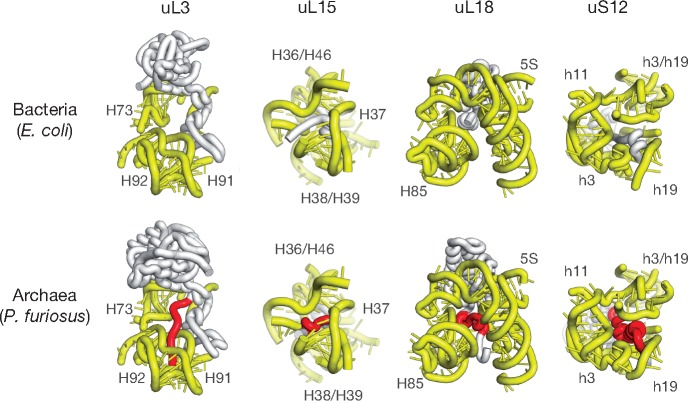Fig. 3.
NLS-type motifs have emerged independently of changes in ribosomal RNA. The panels show the interior of bacterial (E. coli, PDB ID: 6by1) and archaeal (P. furiosus, PDB ID: 4v6u) ribosomes where the NLS-type motifs of ribosomal proteins (highlighted in red) and corresponding segments in bacterial ribosomal proteins interact with rRNA. The figure illustrates that Archaea/Eukarya-specific NLS-type motifs are buried in the ribosome interior where they bind highly conserved rRNA segments. In the archaeal ribosome structure, the NLS-type motifs bind rRNA helical junctions, suggesting that the NLS-motifs may help to recognize rRNA or govern rRNA-folding during ribosome biogenesis. Overall, this figure illustrates that the rRNA structure before and after the emergence of NLS-type motifs remains conserved, illustrating that NLS-type motifs in archaeal ribosomal proteins have evolved independently of changes in rRNA.

